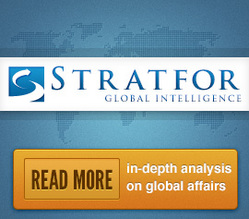Iran's Battles on the Streets and Behind the Scenes
Over the past 72 hours, the city of Tehran has become a glass house. The windows are a bit dirty due to media censorship, but through Web sites like YouTube and Twitter -- and simply by word of mouth -- the world has gotten a decent glimpse of threats to the Islamic Republic being met with an iron fist.
Most of the Western media coverage of the demonstrations in Tehran has been emotion-driven and focused on a segment of the Iranian population -- dominated by educated, young urban elites -- that has dared to cross a line by shouting "death to the dictator" against the president and supreme leader, and in calling for a Green Revolution to bring down the system established by the Islamic Revolution. This somewhat distorted coverage not only fails to seriously consider Iranian President Mahmoud Ahmadinejad's significant and legitimate popularity in the country, but also spreads a perception that a mass revolution has taken root. However, evidence points to the contrary.
A good measure of a revolution is its response to repression. As the weekend progressed, the state's tools of repression were put to work, and the demonstrations dwindled in size. Just as important, the people protesting on Sunday were from the same social group as those protesting from the beginning. In other words, the bazaar merchants, the socially and religiously conservative lower classes, the labor groups and others lacked a reason for or interest in joining a movement of urban youths.
The world may not be witnessing an overnight revolution, but there is no doubt that the regime is greatly unnerved by the demonstrations. Supreme Leader Ayatollah Ali Khamenei issued an ultimatum at Friday prayers, calling for protesters to end the demonstrations and accept Ahmadinejad as president. That demand was openly defied and only increased the protesters' fervor. In the longer term, it will become increasingly difficult for the regime to keep a lid on this dissent, but the state has all the tools it needs to put down such uprisings for now.
What is far more concerning for Khamenei is what is happening behind the scenes, among the clerical and military elite. Ahmadinejad has been the catalyst for a political brawl among highly influential figures in the clerical establishment, including Assembly of Experts Chairman Ali Akbar Hashemi Rafsanjani and Majlis Speaker Ali Larijani. These prominent politicians and clerics, among others who hail from the holy city of Qom, view Ahmadinejad -- a non-clerical, firebrand president who happens to have the backing of the supreme leader -- as a major threat not only to their own political careers, but also to the unity and power of the wealthy clerical establishment.
Each of these figures has battled Ahmadinejad in his own way: Mir Hossein Mousavi, a member of the Expediency Council, has had (relatively speaking) the least to lose as a branded reformist, and therefore put a lot on the line by assuming leadership of the demonstrations on Saturday. Now, Mousavi is nowhere to be found. Rafsanjani has stayed out of sight, but has been extremely active in pressuring Khamenei and using as leverage his position in the Assembly of Experts -- an institution that has the power to dismiss the supreme leader. Larijani has moved much more carefully. With visible reluctance, he sat next to Ahmadinejad during last Friday's sermon, in a demonstration of solidarity requested by the supreme leader himself. However, he has not backed down from demanding probes into violence committed by Basij militiamen against protesters, and on Sunday, he accused the Guardians Council outright of being biased toward Ahmadinejad in this election. Meanwhile, senior cleric Grand Ayatollah Hossein Ali Montazeri (who long was expected to be the successor to Islamic Republic founder Ayatollah Ruhollah Khomeini) has been trying to energize demonstrators and is rumored to be calling for a national strike.
This power struggle also appears to be nipping at the non-clerical security establishment. Figures like defeated presidential candidate Mohsen Rezaie -- who was head of the Islamic Revolutionary Guard Corps (IRGC) for 16 years -- and Yayha Rahim Safavi, who commanded the IRGC for 10 years and is now military adviser to Khamenei, are staunch opponents of Ahmadinejad. Given their tenures, they also wield a great deal of influence among those whose duty it is to defend the Islamic Republic. STRATFOR is also getting some indications that fissures are emerging within the military over the election fallout, though the degree of the tension remains unclear.
Altogether, this battle -- taking place far from the world of Twitter -- is the more immediate threat to Iran's stability. The level of infighting in the regime's upper levels is unprecedented and represents a litmus test for a supreme leader who, for two decades, has attempted to rule by consensus among the clerics and military elite. Ahmadinejad looks to have shaken things up more than Khamenei anticipated, and there is no guarantee that Khamenei's clout will be enough to subdue this growing anti-Ahmadinejad coalition.
Things are looking rocky for the supreme leader, but political warfare among elites is not unique to Iran by any means. Such infighting is part and parcel of any politically competitive environment. Still, the Islamic Republic has never witnessed such deep schisms in the institutions that are designed to safeguard the Islamic Revolution. Khamenei has made a conscious choice in defending Ahmadinejad, but the price of that choice is creeping upward by the day.




